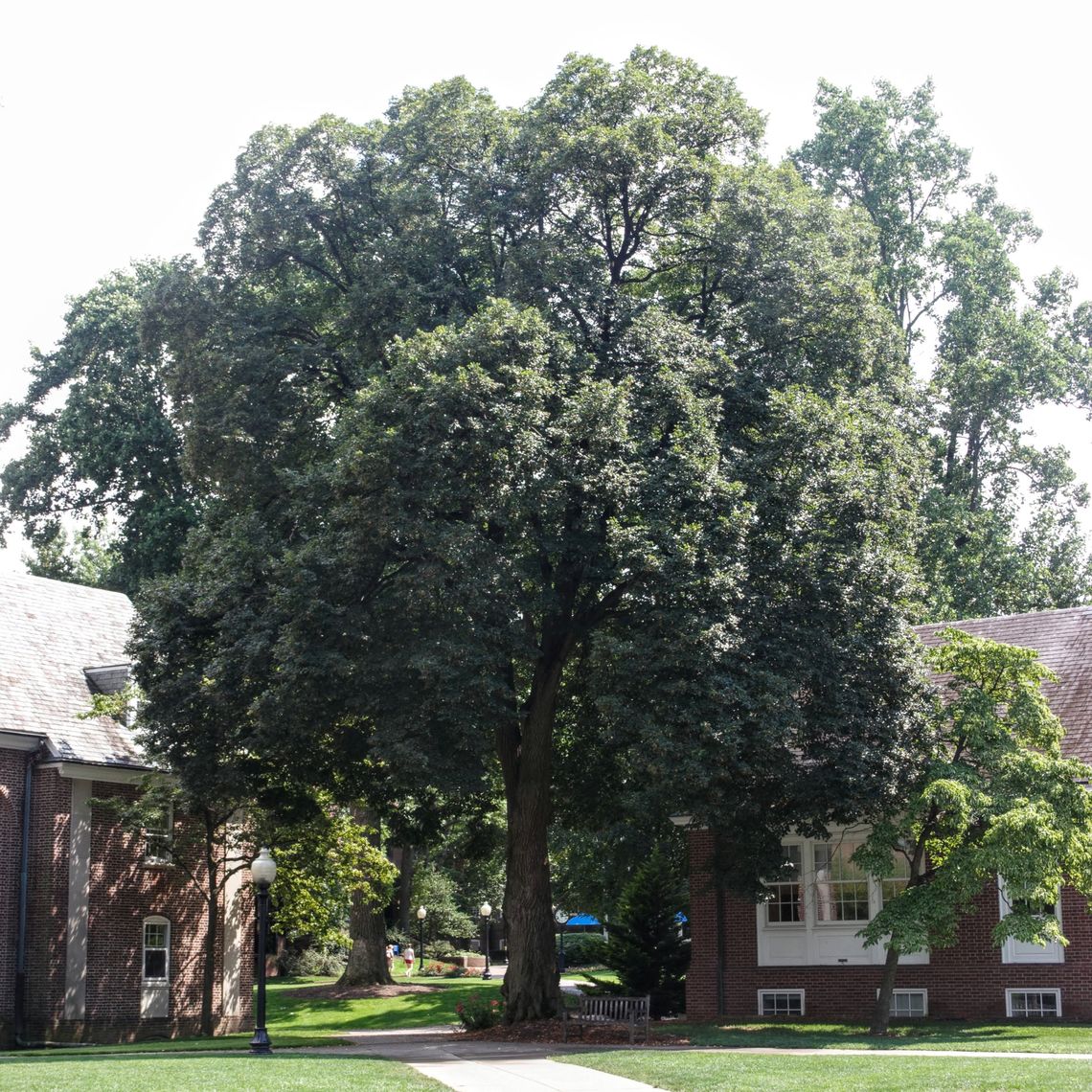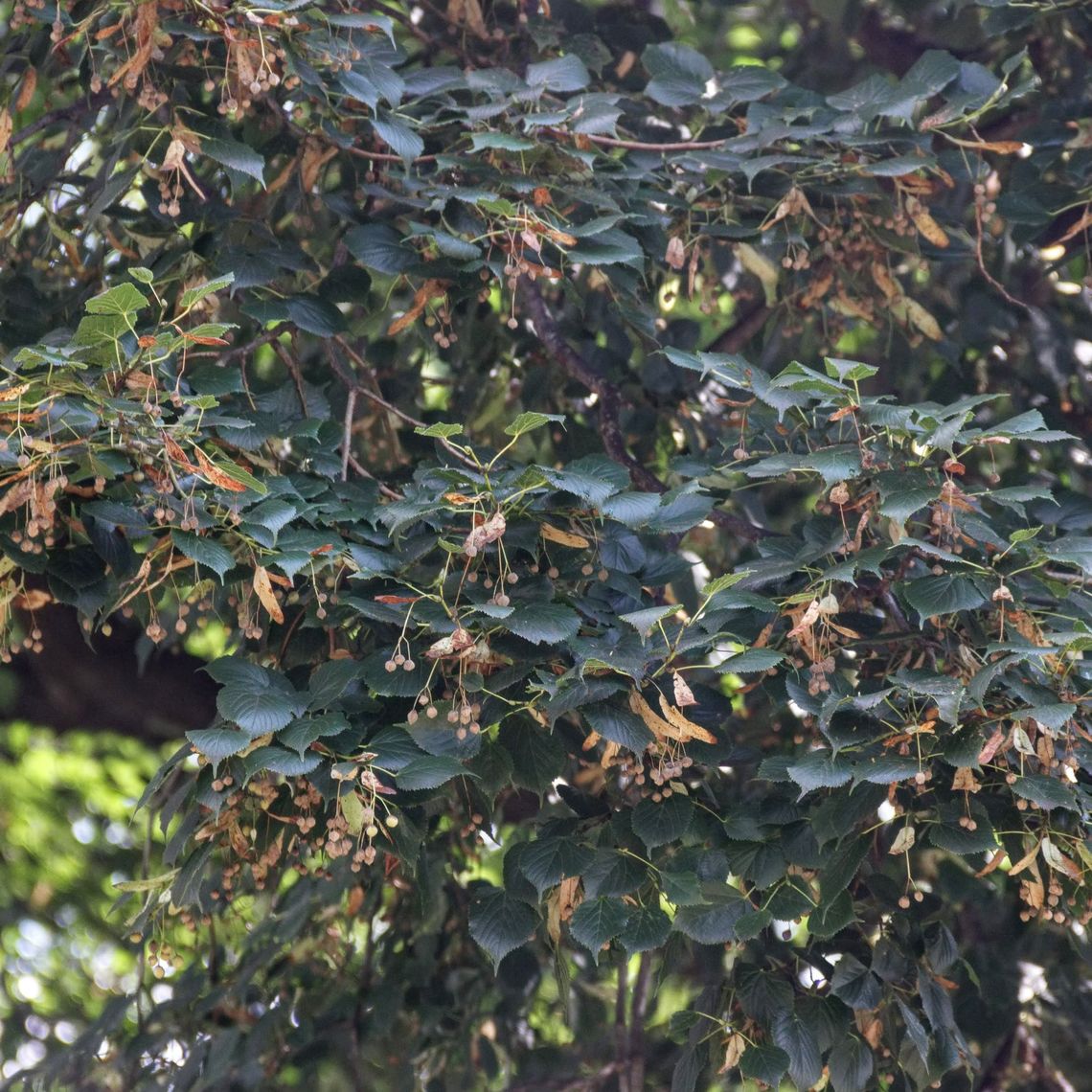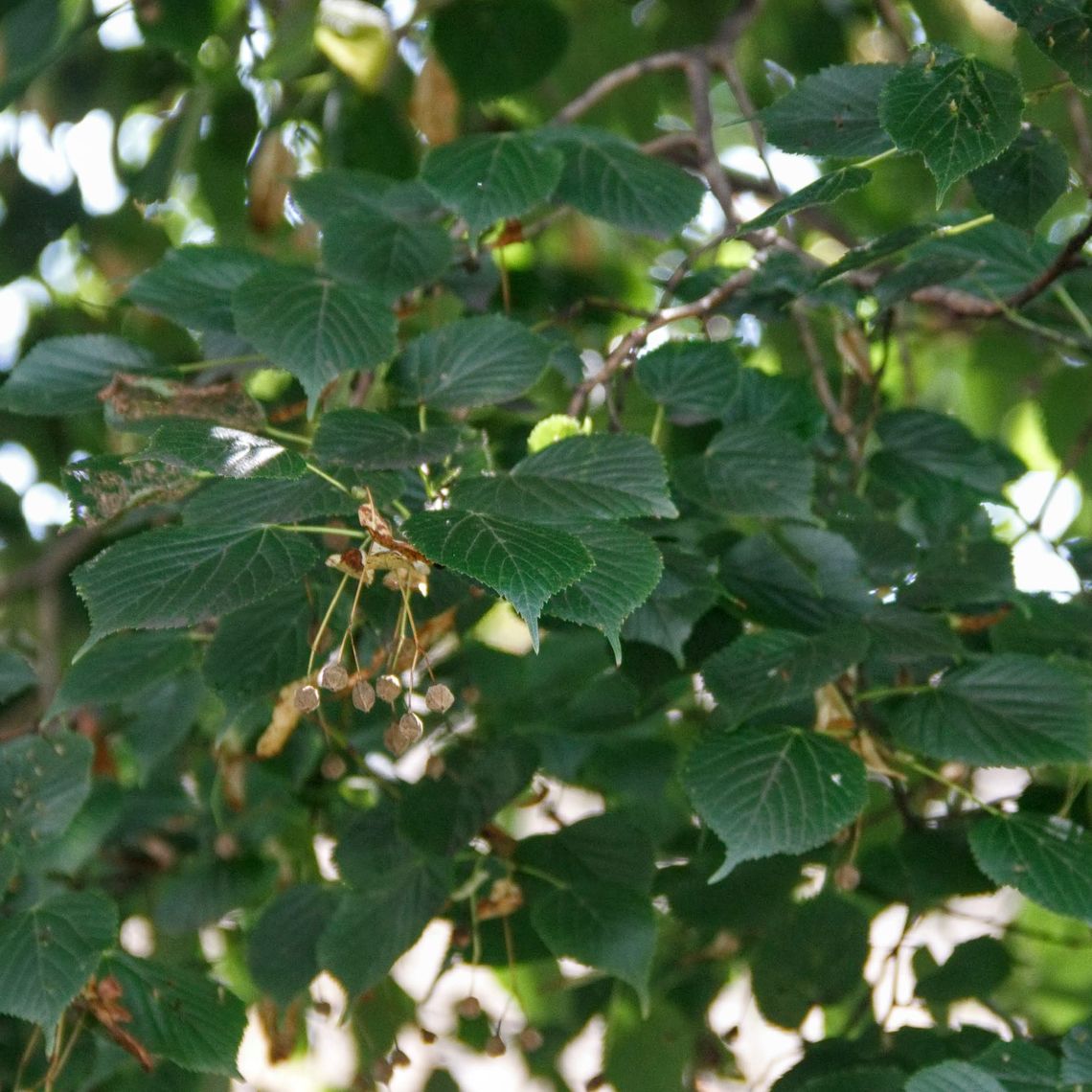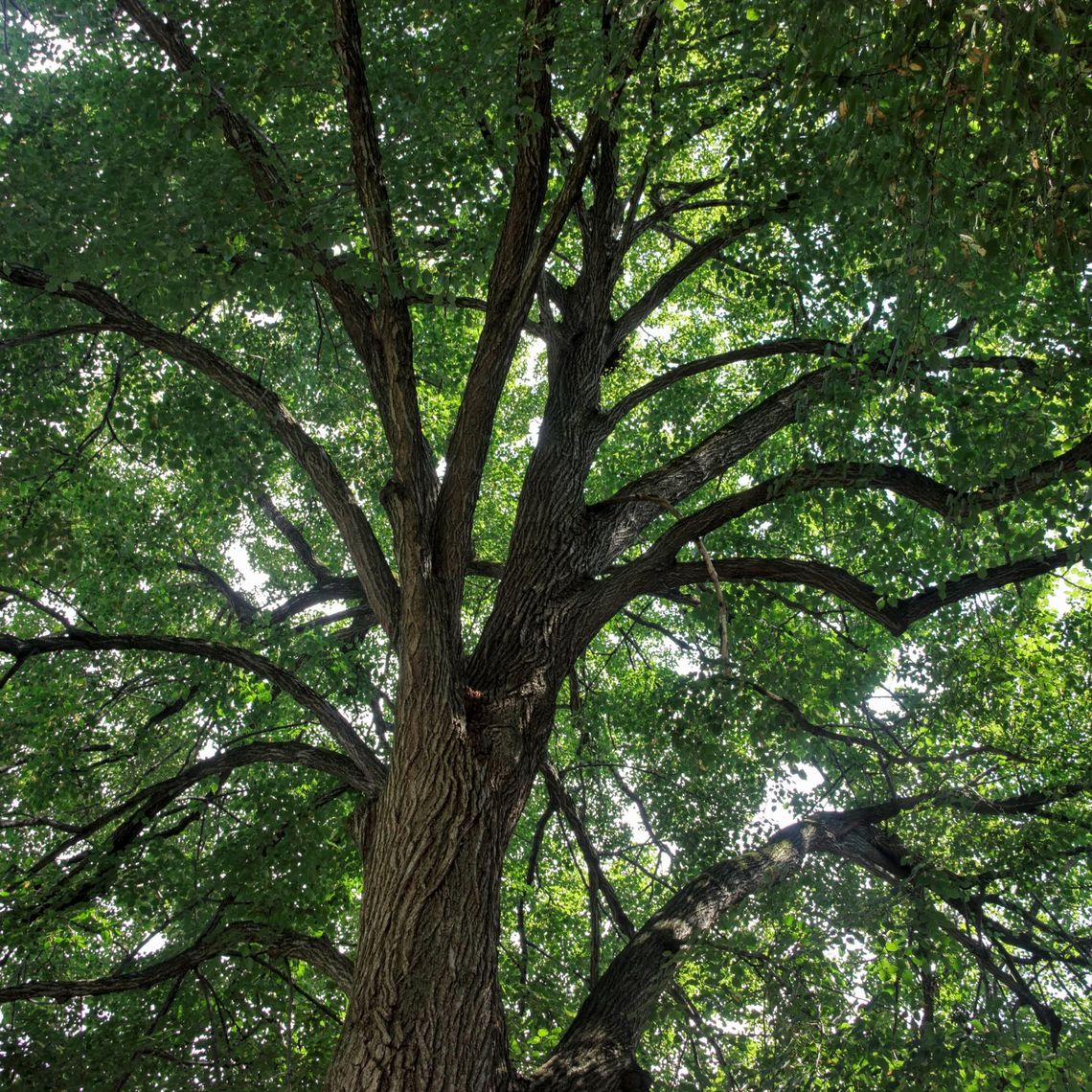Little Leaf Linden (Tilia cordata)
The little leaf linden is popularly used as a shade tree, since 1) it has large, heart-shaped leaves, 2) it is dense and low-branched and 3) it is extremely tolerant to urban conditions. Like the American linden, the little leaf linden produces creamy-yellow flowers that bloom in hanging clusters in June. These flowers attract bees and butterflies.
Family: Tiliaceae (Linden)
Characteristics: The 1.5-inch to 3-inch-long leaves are heart-shaped, toothed, shiny, and dark green. In the fall, leaves turn a pale yellow. In June, creamy-yellow flowers begin to bloom in hanging clusters. These flowers are followed by small, slightly hairy, and round nutlets. Bark is gray-brown and ridged, though young trunks are smooth. This tree is distinctly pyramidal in youth, becoming pyramidal-rounded and densely branched with age. It grows 60-70 feet high and 30-45 feet wide.
Foliage: Deciduous (leaves lost seasonally)
Geographic Origin: Europe, southwestern Asia (non-native)
Cultivation Notes: Requires low maintenance. Does best in full sun to part shade. Prefers medium-moist and well drained soils, though is tolerant to a wide range of soil conditions. This tree is very tolerant to air pollution and urban conditions.
Number on Campus: 7
Sources: Dirr, Morton Arboretum, Missouri Botanical Garden




